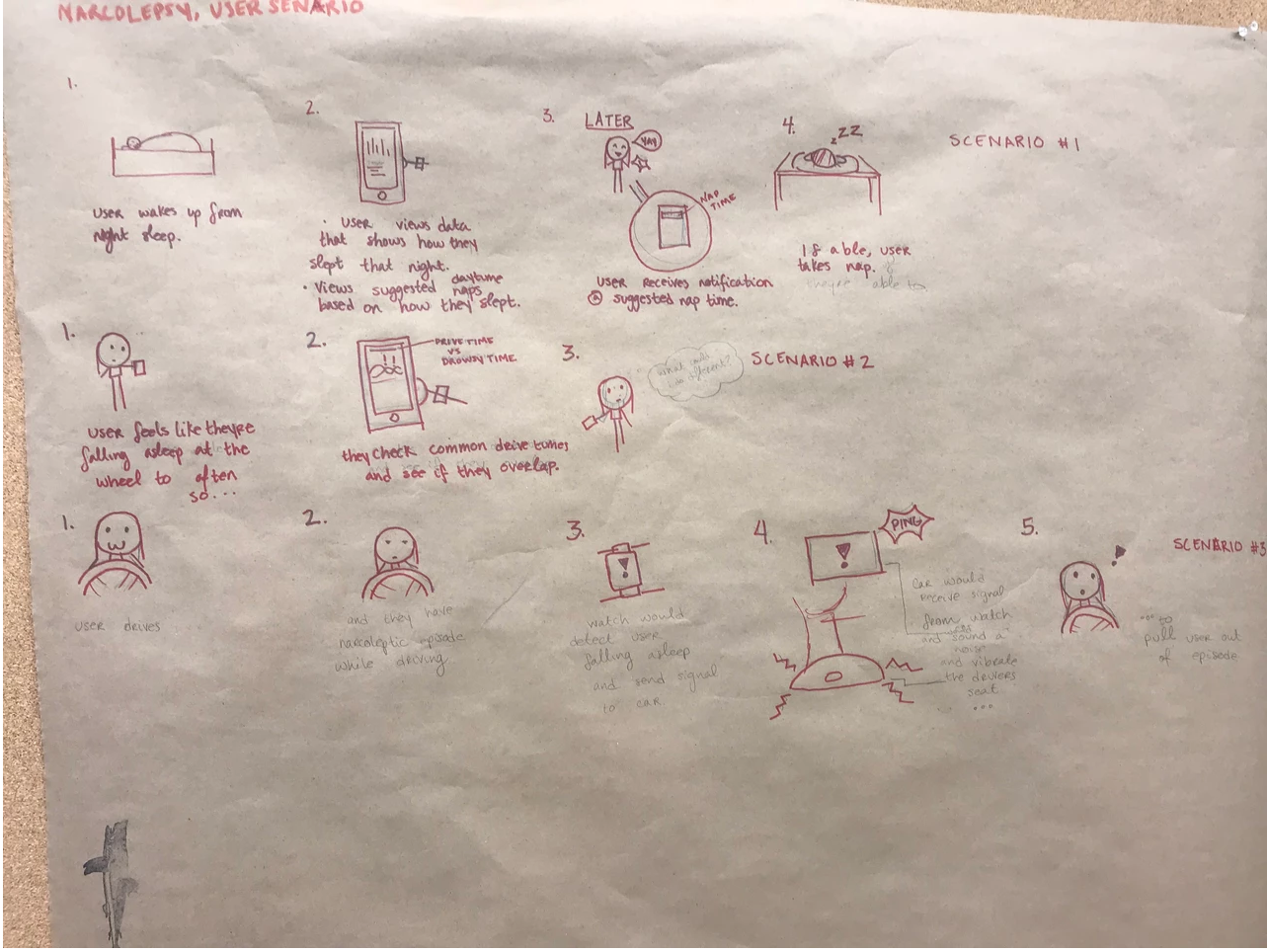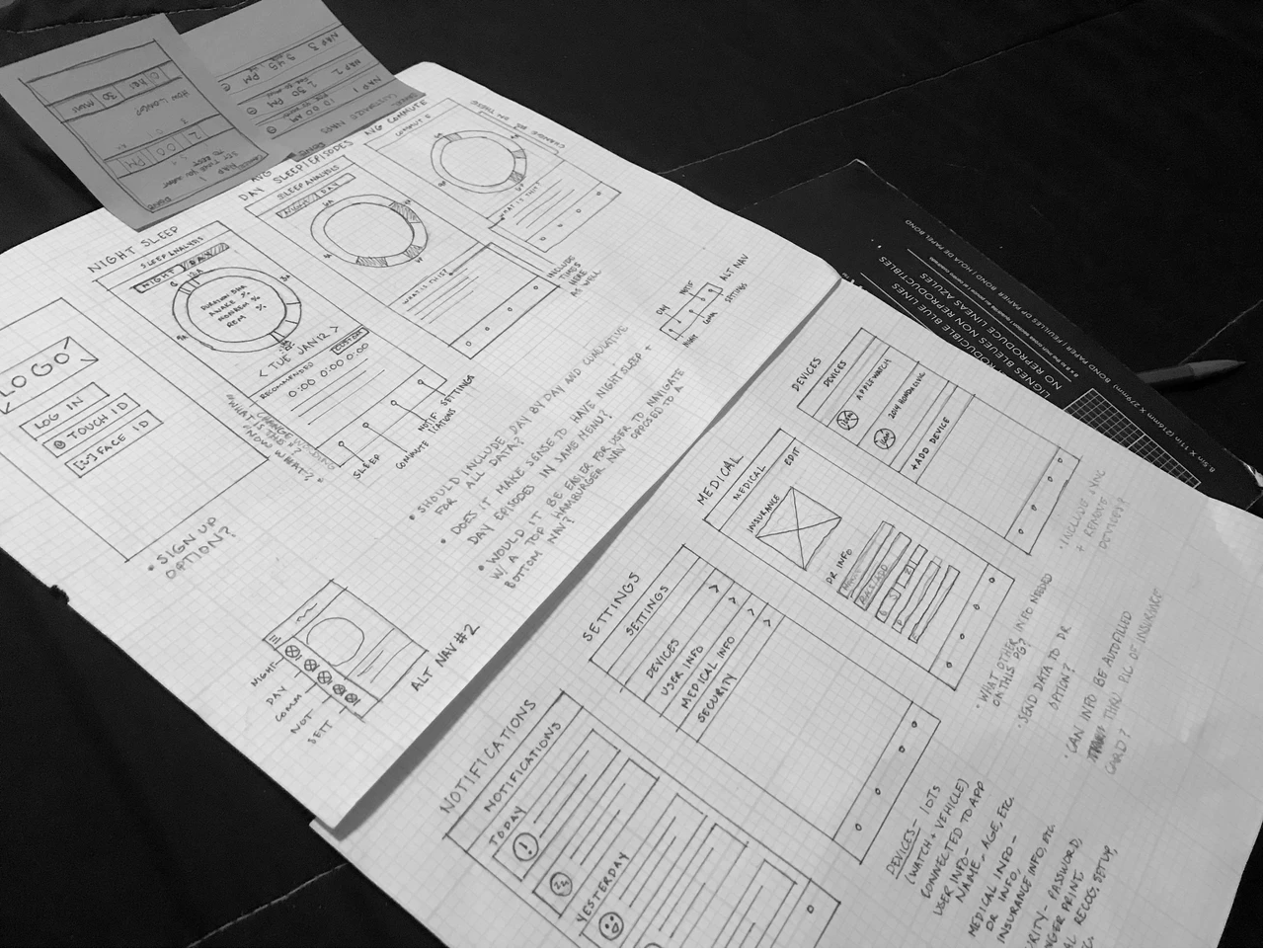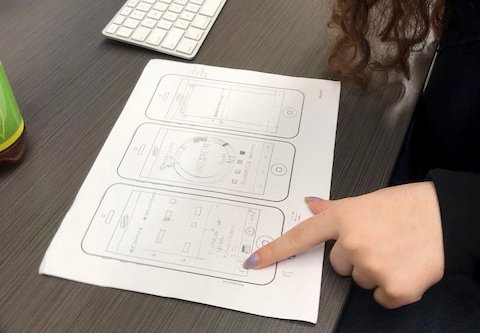Jolt
Role: Researcher, Visual & Interaction Designer
Duration: October 2017 – December 2017, 2 months
Tools: Illustrator, Photoshop, Invision, Adobe XD
Brief
Jolt is a utility app designed to help people with narcolepsy drive their car and reduce the stress of falling asleep behind the wheel. This was the final project for my upper level interactive design class during my last year at Texas State.
Problem
Narcoleptic episodes cause the patient to fall asleep suddenly and beyond their control. Someone abruptly falling asleep can be problematic or even dangerous in day-to-day tasks such as driving, which isn’t just a danger to them but the people around them.
How to Help
Design an app that pulls the user out of narcoleptic episodes and uses data collection to help prevent future episodes while driving.
Research
What is Narcolepsy?
Narcolepsy is a rare neurological disorder that involves a decreased ability to regulate sleep-wake cycles. This is caused by loss of hypocretin, the chemical in the brain which regulates the sleep-wake cycle.
How is narcoleptic sleep cycle different from a regular
sleep cycle?
The chart below shows that Narcoleptics have more REM sleep than non-narcoleptics, but REM cycles are scattered throughout the day and night rather than at night.
Not just “being tired.”
Before researching, I knew very little about Narcolepsy other than someone “falling asleep randomly beyond their control.” However, after in-depth research using the design thinking process and interviews with professionals, including a Narcoleptic patient, I gained a significant insight into a Narcoleptic’s day to day life and how they have to center their day around episodes.
Below, I mapped out my findings in an empathy map, a user scenario, and the beginnings of a user persona.


What features could help a person with Narcolepsy?
I used my newfound knowledge from my research to organize and plan all the features for the app. The features for Jolt divide into two parts: preventing narcoleptic episodes while driving through data collection. If needed, the vehicle would pull the driver out of narcoleptic episodes long enough for the narcoleptic person to pull over. I mapped out these features in lo-fi wireframes.



Potential User
With this research in mind, I developed a persona, Marie, loosely based around a Narcolepsy patient I interviewed. This persona helped me empathize with what living with Narcolepsy looks like in day-to-day life and what features would help.
Mid-fi Wireframes
Next, I further polished my designs with mid-fi wireframes.
Final Design
How it works
Connected through bluetooth, Jolt works across three devices: the mobile app, a smart watch or wristband, and the user’s vehicle. All three devices detect when the user is driving.
Night Sleep
The purpose of data collection is to help detect patterns in episodes and predict future episodes based on said patterns, and therefore help prevent falling asleep behind the wheel.
When someone with Narcolepsy goes through a night with less sleep, episodes tend to be more frequent. To track night sleep, the user would wear their watch to bed and the app would track their sleep patterns.
Episode & Driving Data
Since Narcoleptics have trouble with memory, data gives exact figures on the times episodes occur and when they operate their vehicle. That way users won’t have to keep track from memory alone.
Notifications
In-app notifications are located under the notifications tab and vary in purpose. They serve as alarms, warnings, or offer words of encouragement. Users can also allot for push notifications if that is their preference.
User Information
Users fill out information about themselves, their medical and insurance information, as well as view their data archive. This information could come in handy for medical evaluations.
IoT Devices
For the Internet of Things devices, I wanted to provide flexibility


Branding & Identity
Logo Design
The mark combines a steering wheel and a ring chart, which represent the two key features of the app—data collection and pulling the driver out of an episode. It’s also designed to be dynamic where it changes in color, like the varying data, and orientation, like a steering wheel.
Color & Typography
For color palette, I chose a dark purple base that would help reduce visual fatigue that also provides and paired it with other muted colors that would stand out.
Takeaways
Research=important. First project I had to reach out to an outside source and do interviews for.
Scope creep is a thing.
Special Thanks
Melissa Patterson, Outreach Coordinator for Narcolepsy Network + Narcolepsy Patient
Claire Crisp, Executive Director of WakeupNarcolepsy
Lindsay Jesteadt, WakeupNarcolepsy
The making of this app would not have been possible without their invaluable insight on narcolepsy.














